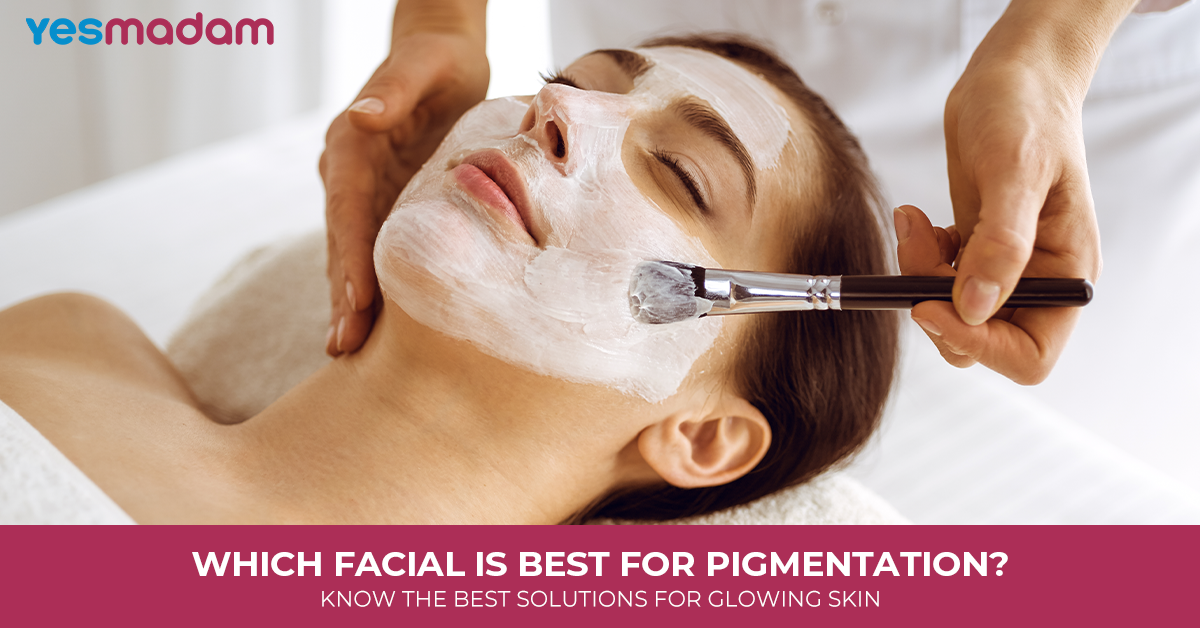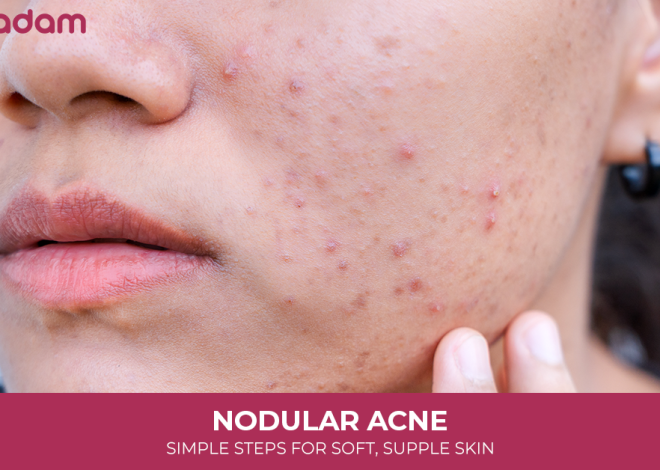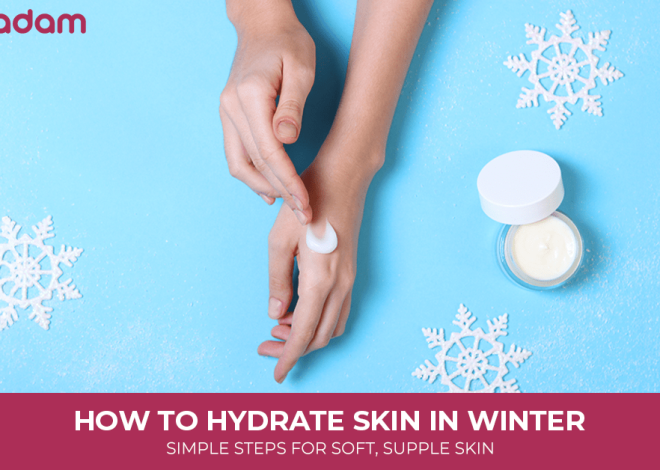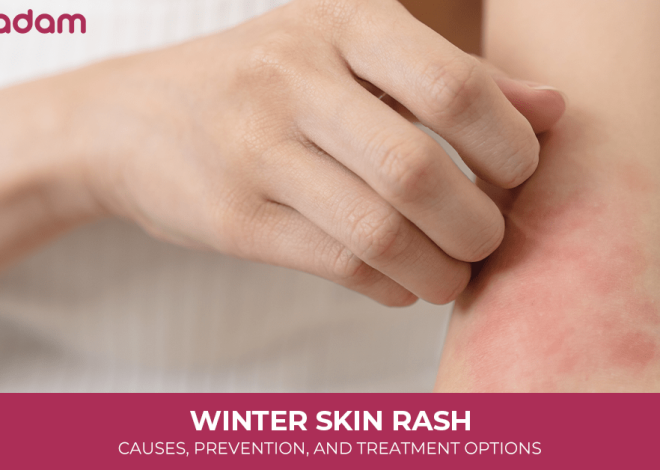
Which Facial is Best for Pigmentation? Know the Best Solutions for Glowing Skin
Pigmentation is one of the most common skin concerns that many of us have either experienced or are still struggling with. If you’re dealing with this issue, you’re likely noticing dark spots, uneven skin tone, or melasma. And if you’ve ever asked yourself, “which facial is best for pigmentation?”, you’re definitely not alone. With so many facial treatments available in salons and endless DIY remedies at home, it can be overwhelming to figure out what truly works.
That’s exactly why Yes Madam has brought you this blog to answer all your questions and help you choose the right facial to treat pigmentation effectively.
So, let’s get started!
Table of Contents
What is Pigmentation?

Before discussing which facial is best for pigmentation, it’s important to first understand what pigmentation actually is and what causes it. In simple terms, pigmentation is the natural coloring of your skin, determined by the amount of melanin your body produces.
When your skin produces excess melanin, due to factors like sun exposure, hormonal changes, acne scars, or aging, it can lead to:
- Dark spots
- Freckles
- Melasma
- Uneven skin tone
While pigmentation can be quite stubborn, with the right skincare approach, especially targeted facials, it can be visibly reduced over time.
Which Facial is Best for Pigmentation?

This is the most frequently asked question, and the answer lies in choosing treatments that focus on exfoliation, skin brightening, and melanin control. To treat pigmentation, there are many professional options available and work well. Chemical peels, laser treatments, and facials with brightening ingredients are some of the most effective methods.
Some of the specific pigmentation removal options are mentioned below:
1. Vitamin C Facial
If you’re wondering which facial is best for pigmentation, a Vitamin C facial often tops the list. It’s known for:
- Antioxidant protection
- Brightening dull skin
- Reducing melanin production
- Stimulating collagen
This facial includes a Vitamin C cleanser, serum, mask, and massage which make your skin visibly brighter in just one session.
2. Chemical Peel Facial
Chemical peel facials use mild acids like glycolic, salicylic, or lactic acid to exfoliate dead skin cells and promote cell turnover.
- Fades acne scars and age spots
- Reduces melanin buildup
- Ideal for oily, acne-prone, pigmented skin
However, this should only be done by certified professionals to avoid burns or over-peeling.
3. Hydrafacial with Brightening Booster
A luxurious option, Hydrafacial offers deep cleansing, exfoliation, extraction, and infusion of brightening serums like kojic acid and Vitamin C.
- Instant glow and reduced pigmentation
- Suitable for all skin types
- Non-invasive and hydrating
It’s perfect for those asking not only which facial is good for pigmentation but also want hydration and overall rejuvenation.
4. Microdermabrasion Facial
This facial uses a gentle machine to exfoliate the top layer of skin, which helps in:
- Reducing dark spots and discoloration
- Smoothing out the texture
- Improving the absorption of serums
Though not a cure-all, it’s a solid answer for which facial is best for pigmentation if you want progressive improvement.
5. Laser Treatments
Laser therapies like IPL (Intense Pulsed Light) and Q-switched lasers are highly effective for pigmentation. They work by targeting excess melanin in the skin, breaking it down to fade dark spots.
- Reduces pigmentation, age spots, and freckles
- IPL also treats fine lines and spider veins
- Quick, precise, and minimal downtime
These treatments are great for those wanting fast results for stubborn pigmentation and overall skin clarity.
Is Facial Good for Pigmentation?
Absolutely. Is facial good for pigmentation is a question that arises due to skepticism around short-term treatments. But when done regularly, facials can:
- Increase blood circulation
- Improve lymphatic drainage
- Accelerate cell regeneration
- Target melanin-producing cells
That said, facials are supportive therapies, not magic fixes. Consistency and sun protection play a huge role in outcomes.
Natural DIY Options: Facial for Pigmentation at Home

Pigmentation issues like dark spots, melasma, and uneven skin tone can often be managed with natural ingredients found in your kitchen.
These DIY remedies gently exfoliate, lighten hyperpigmented areas, and nourish the skin. However, they work best with regular use and proper skincare habits.
Lemon Juice:
Lemon juice contains citric acid and vitamin C, both of which have natural skin-lightening properties. It helps break down excess melanin and reduce the appearance of dark spots. Mix equal parts of lemon juice and water, apply with a cotton ball on the affected area, and rinse off after 10–15 minutes. Avoid direct sunlight after application.
Potato
Potatoes, rich in catecholase enzymes popularly known for reducing dark spots and pigmentation. You can either rub a raw potato slice directly on pigmented skin or grate it to make a paste and apply it for 15–20 minutes. Regular use is also effective for lightening dark circles and blemishes.
Turmeric
Turmeric contains curcumin, a powerful antioxidant known for its anti-inflammatory and skin-brightening properties. To create a beneficial face mask, mix turmeric with milk, yogurt, or honey until it forms a thick paste. Apply this mask to your face and leave it on for 15–20 minutes. Regular use can help even out your skin tone and reduce stubborn pigmentation.
Papaya
Papaya is a natural wonder for your skin, thanks to an enzyme called papain. This powerful enzyme works to gently remove dead skin cells and stimulate the regeneration of new ones. To harness its benefits, simply mash ripe papaya into a smooth paste and apply it to your face. After 20 minutes, rinse with lukewarm water. Regular use can help reduce dark patches and promote a radiant, glowing complexion.
Almond Oil or Paste
Almond oil is rich in vitamin E and fatty acids that nourish dry, pigmented skin and promote even skin tone. You can gently massage almond oil onto your skin at night or use a paste made from soaked almonds for a more intense treatment.
Milk or Buttermilk
Both milk and buttermilk contain lactic acid, a natural exfoliant that removes dead skin cells and lightens dark spots. Soak a cotton pad in milk or buttermilk and dab it onto affected areas. Leave it on for 15 minutes before rinsing off.
Apple Cider Vinegar
ACV contains acetic acid, which may help lighten pigmentation and improve overall skin clarity. Dilute one part ACV with three parts water, apply it to dark spots with a cotton ball, and rinse after 5–10 minutes. Don’t use undiluted ACV as it may irritate the skin.
Cucumber
Cucumber is rich in antioxidants and has a natural cooling and lightening effect. You can apply cucumber juice or slices to pigmented areas to soothe the skin and help brighten uneven patches. It’s especially useful for treating sun-induced pigmentation.
Aloe Vera
Aloe vera contains aloin, a natural depigmenting compound that can help reduce melanin production. Apply fresh aloe vera gel to the skin before bedtime and rinse off in the morning. With regular use, it can help lighten hyperpigmentation and soothe irritated skin.
Mulberry Extract
Mulberry leaves and extract are known to inhibit tyrosinase, an enzyme that promotes melanin production. You can crush fresh mulberry leaves to extract juice or use store-bought mulberry extract. Apply it to the skin to help fade pigmentation naturally over time.
Important Considerations
- Dilution: Strong ingredients like lemon juice and apple cider vinegar must be diluted with water or other soothing bases to prevent burning or irritation.
- Sun Protection: Many natural ingredients increase your skin’s sensitivity to UV rays. Always apply a broad-spectrum sunscreen during the day, even if you’re indoors, to prevent further pigmentation.
- Patch Test: Before applying any remedy to your face, perform a patch test on your wrist or behind your ear. Wait 24 hours to check for any redness, itching, or allergic reaction.
- Consistency: DIY remedies aren’t instant fixes. Visible results can take several weeks to months. Be patient and follow the routine consistently, 2–3 times per week.
- Consult a Dermatologist: If your pigmentation is hormonal, genetic, or caused by underlying medical issues, consult a dermatologist for a professional diagnosis and advanced treatment options like chemical peels, laser therapy, or prescription creams.
Professional Options for Long-Term Results

If you want more permanent or faster results, you can explore facials that use advanced dermatological tools.
1. Laser Facials
- Uses targeted light to break melanin
- Long-lasting effects
- Requires multiple sessions
2. LED Light Therapy
- Blue and red lights for acne and pigmentation
- Non-invasive
- Often combined with Hydrafacial
3. Oxygen Facials with Skin Brighteners
- Boosts skin oxygenation
- Delivers glutathione, Vitamin C, and arbutin
- Improves overall clarity
These options are great choices when deciding which facial is best for pigmentation with medical-grade results.
Best Practices for Facial Aftercare
Regardless of which facial you choose, what you do after is critical:
- Always wear sunscreen (SPF 30 or more)
- Avoid direct sun for 24-48 hours post-facial
- Use a gentle cleanser and hydrating toner
- Avoid exfoliating for 2–3 days
- Don’t pick at peeling skin
This ensures you don’t reverse the gains made by the facial.
Real-Life Post Facial Results: Before & After Transformation
Here’s what a usual 8-week journey with targeted facials looks like:
| Week | Visible Result |
| 1–2 | Brighter skin tone, slight reduction in dark spots |
| 3–4 | Improved skin texture and fading pigmentation |
| 5–6 | Even-toned appearance and softer skin |
| 7–8 | Noticeable glow, reduced pigmentation patches |
Pair your facials with a good skincare routine (Vitamin C, niacinamide, sunscreen) for best results.
Which Facial Is Good for Pigmentation? A Quick Comparison Chart (Value added )
| Facial Type | Best For | Cost (Average) | Recommended Frequency |
| Vitamin C Facial | Mild pigmentation, dullness | ₹1200–₹2500 | Bi-weekly |
| Chemical Peel | Stubborn dark spots, acne marks | ₹2000–₹4000 | Monthly |
| Hydrafacial with Booster | All skin types, instant glow | ₹3500–₹8000 | Monthly |
| Microdermabrasion | Texture + pigmentation | ₹1500–₹3000 | Monthly |
| Laser Facial | Deep melanin reduction | ₹4000–₹10000 | 4–6 sessions |
All of these answer the question: which facial is good for pigmentation, but your skin type and sensitivity should guide your choice.
Lifestyle Tips for Faster Results
Getting regular facials is just one part of the solution. To truly fade pigmentation and maintain glowing skin, your daily habits matter just as much. Here’s what to focus on:
- Hydrate consistently: Drink at least 8–10 glasses of water daily. Proper hydration keeps your skin cells plump, supports detoxification, and helps fade dark spots more efficiently.
- Protect your skin from the sun: Avoid stepping out during peak UV hours (10 AM to 3 PM). Always wear broad-spectrum sunscreen with SPF 30 or higher—even on cloudy days.
- Eat antioxidant-rich foods: Include berries, leafy greens, citrus fruits, nuts, and seeds in your diet. These combat oxidative stress and help repair skin from within, reducing pigmentation over time.
- Cut down on sugar: A high-sugar diet leads to inflammation and increased melanin production, worsening pigmentation. Choose whole foods over processed sweets.
- Prioritize quality sleep: Aim for 7–8 hours of restful sleep each night. This is when your skin regenerates, repairs damage, and balances melanin production.
Together with your targeted facials, these healthy lifestyle choices speed up pigmentation reduction and improve long-term skin clarity.
Conclusion:
To wrap it up, which facial is best for pigmentation depends on how deep your pigmentation is, your skin type, and your commitment. Vitamin C and chemical peel facials are great starting points, while Hydrafacials and laser facials offer faster, more dramatic results.
For anyone still wondering is facial good for pigmentation, the answer is a big yes but only when done consistently and coupled with sun protection and aftercare. Even your regular facial can show results with patience. Whether you’re doing it DIY or heading to a professional clinic, a facial tailored to pigmentation can truly transform your skin.
Frequently Asked Questions (FAQs)
1. What causes skin pigmentation?
Pigmentation occurs due to excess melanin production, triggered by sun exposure, hormonal changes, acne scars, or aging.
2. Can facials really reduce pigmentation?
Yes, certain facials help lighten pigmentation by exfoliating dead skin, boosting cell renewal, and infusing brightening agents.
3. Which ingredients in facials help with pigmentation?
Facials with vitamin C, kojic acid, niacinamide, glycolic acid, and licorice extract are effective for brightening skin tone.
4. How often should I get a facial for skin pigmentation?
Every 2–4 weeks is ideal, depending on the severity of pigmentation and your skin type.
5. Is a hydrafacial good for pigmentation?
Yes, hydrafacial with brightening boosters like vitamin C and kojic acid offers visible improvement in pigmentation and overall glow.
6. Are laser facials better than regular facials for pigmentation?
Laser facials like IPL or Q-switched lasers work faster on deeper pigmentation, but may cost more and need downtime.
7. Do facials help melasma?
Some facials can lighten melasma, especially those with gentle exfoliants and pigment-reducing serums, but results may vary.
8. Can I combine facials with other pigmentation treatments?
Yes, combining facials with chemical peels, laser treatments, or topical creams often gives better and faster results.
9. How long does it take to see results from facials for pigmentation?
You may notice a glow after one session, but a visible reduction in pigmentation typically takes 4–6 sessions.
10. Are facials safe for sensitive or acne-prone skin with pigmentation?
Yes, but choose facials designed for sensitive skin and avoid harsh peels or aggressive exfoliation to prevent irritation.



